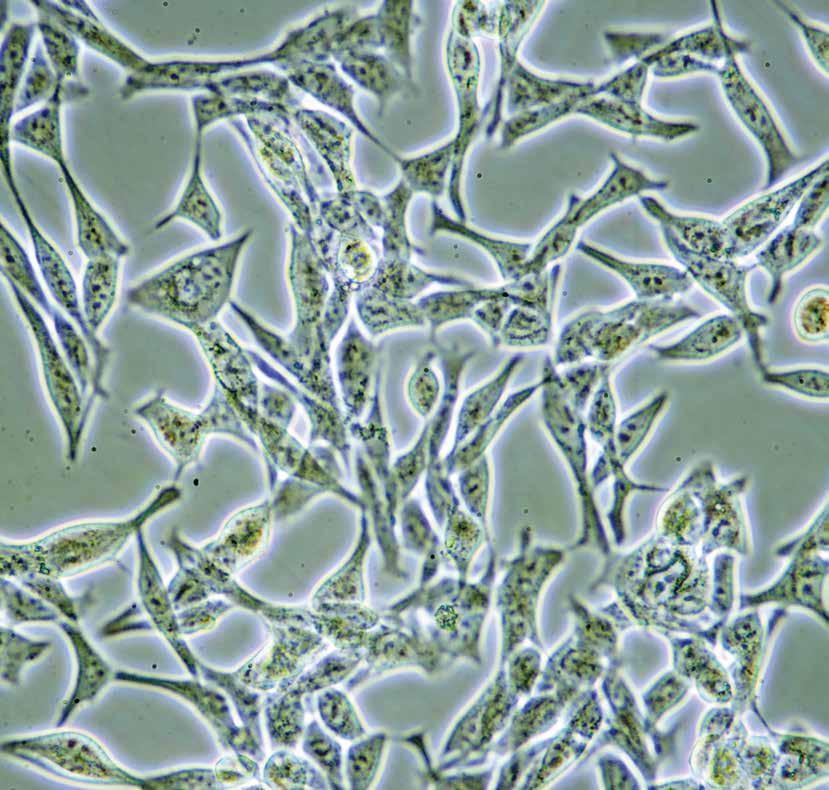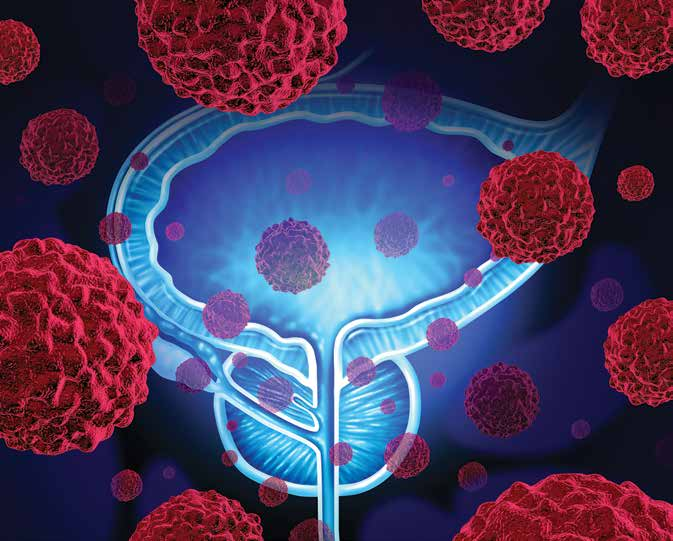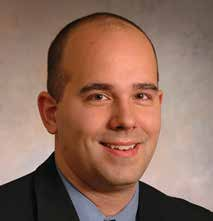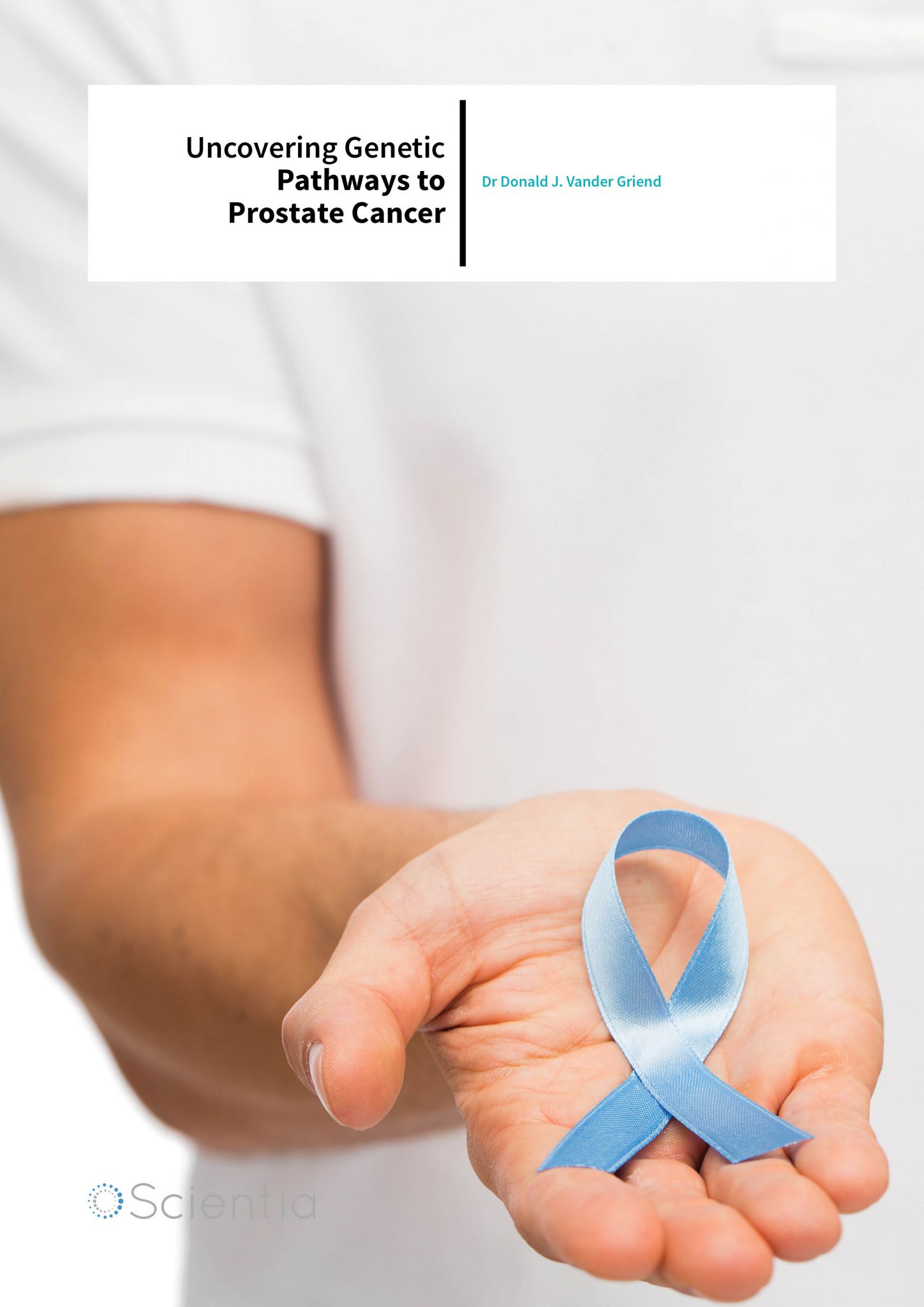Dr Donald J. Vander Griend – Uncovering Genetic Pathways to Prostate Cancer
Dr Donald Vander Griend and his research team at the University of Chicago have devoted the last few years to investigating novel gene pathways which underlie prostate cancer development and progression, as well as the factors leading to treatment resistance and metastatic progression in patients.

Putting a Stop to Men’s Most Common Cancer
Approximately 1.1 million men are diagnosed with prostate cancer globally every year. In the UK, this equates to over 47,000 men diagnosed annually. As the predominant site of cancer in ageing men, research in this area is critical. With funding from the National Institutes of Health and the Department of Defense, Dr Donald Vander Griend and his team are developing creative and innovative approaches to researching this widespread disease. When asked what motivated him to pursue a career in prostate cancer research, Dr Vander Griend explains: ‘For me it was solving a major clinical problem that one in six American men face, which is the diagnosis of prostate cancer. It also became more personal when my father and father-in-law were diagnosed and treated themselves.’
One area the team is focusing on is why prostate cancer develops. For example, the prostate gland is developmentally and functionally similar to the seminal vesicles – they are both sex accessory glands, they are both androgen dependent – so why are there 250,000 cases of prostate cancer reported annually in the United States and less than 50 total cases of seminal vesicle cancer have been reported in the English literature? To investigate this question, Dr Vander Griend and his colleagues analysed the genes expressed by the tissues of both the prostate and seminal vesicles in order to highlight the key differences between the organs as well as identifying developmental pathways which could predict tumour initiation and progression.
Another issue Dr Vander Griend is examining is that of treatment resistance in prostate cancer. Since the 1940s, the core treatment of prostate cancer has focused on androgen receptor signalling. Androgens are male sex hormones, such as testosterone. In the healthy prostate, the androgen receptor pathway is necessary for the function, survival and differentiation of tissue. As cancerous cells develop, the function of androgen receptor signalling changes from tumour suppressing to tumour promoting. Therefore, care has concentrated on inhibiting this signalling axis. In spite of this treatment, many men experience disease progression due to the development of castration resistant prostate cancer. Dr Vander Griend’s goal is to identify the molecular pathways which lead to resistance so that they can be targeted.
A Novel Cancer Biomodule
So why is it that the prostate gland is so prone to enlargement and tumour formation? As Dr Vander Griend posits: ‘My theory is that the prostate becomes diseased because of how it develops and, likewise, the seminal vesicles do not become diseased because of how they develop at the cellular level.’ Therefore, his lab has undertaken studies on one pathway involved in the control of gene expression: the homeobox (Hox) gene family of transcription factors. Members of these regulatory pathways have been found to be mutated in several cancers but there is still doubt as to how they function in both normal and cancerous cells.
In a 2012 study, Dr Vander Griend and his colleagues investigated the differences in the gene expression profiles of normal prostate and seminal vesicle epithelial cells in order to identify the pathways leading to the development of prostate cancer. This led to the identification of a new cancer biomodule unique to prostate epithelial cells. A biomodule is a network of genes connected by their protein to protein interactions. In this case, it was made up of two Hox genes (HoxA9 and HoxB7) as well as three of their cofactors (Meis1, Meis2 and Pbx1).
The team then analysed the levels of these genes in normal, primary prostate cancer and castration resistant prostate cancer tissues and determined their relationships to known oncogenes (cancer causing genes) using algorithms. They found that levels of Meis1, Meis2 and Pbx1 declined as cancer progressed and metastasised. Decreased levels of Meis1 and Meis2 also predicted poorer prognosis for patients. The expression of the biomodule was also able to detect overall survival differences in watchful waiting patient groups, distinguish between normal tissue, primary tumours and metastatic disease and identify patients in which disease was more likely to recur posttreatment.
The clinical relevance of this biomodule cannot be ignored. Meis genes have already been shown to play a role in other forms of cancer; if they are implicated in the formation of poor prognosis tumours then they may serve as useful biomarkers or targets for treatment. Such biomarkers could be critical in discerning which patients with low grade tumours would benefit from early treatment. Therapies which restore Meis1, Meis2 or Pbx1 to normal levels may prove effective in preventing or treating prostate tumours.
‘What attracted me to prostate cancer research? For me it was solving a major clinical problem that one in six American men face, which is the diagnosis of prostate cancer.’

Unlocking the Secrets of Sox2
Another transcription factor to consider is Sox2. This embryonic stem cell regulator is essential for maintaining the survival of undifferentiated stem cells and regulates the expression of over 1200 genes. In other words, Sox2 has a role in dictating what stem cells will become in the body once mature and is particularly important in how the prostate forms and develops. Sox2 expression has also been linked to a number of cancers, including prostate cancer. This leads to a number of questions for Dr Vander Griend: ‘Sox2 regulates other genes; what is it regulating in the prostate? Does Sox2 have unique and novel functions in the prostate that we can exploit for therapeutic benefit? For example, if we can target Sox2 in prostate cancer cells, we could block the ability of cells to acquire resistance to hormone therapy and thus increase the efficacy of hormone therapy.’ These questions have led to a grant of 1.5 million US dollars from the National Institutes of Health to further study and understand how Sox2 works.
By investigating the role of Sox2 in normal and malignant prostate epithelial cells, Dr Vander Griend and his colleagues found that Sox2 is expressed in a portion of basal epithelial cells in normal prostate tissue but tumours were either uniformly Sox2 positive or negative with the percentage of Sox2 positive tumours increasing with more advanced and metastatic tumours. They also observed that Sox2 expression was repressed by increased androgen receptor signalling. Conversely, resistance to anti-androgens was associated with a marked increase in Sox2 and consequent castration resistant tumour growth. Knockdown of Sox2 protein expression led to a significant inhibition of castration resistant cell growth, supporting the data demonstrating the role of Sox2 in acquisition of resistance. Finally, the team found that castration resistant tumour growth was not promoted via reactivation of established processes but rather through new pathways in which Sox2 alone was sufficient to promote castration resistance.
This study offers many clinically significant applications. The finding that tumours of different cell origins may display unique progression characteristics has the potential to become a powerful prognostic tool. Further study could also lead to the identification of clinically targetable pathways to prevent or treat castration resistant prostate tumour formation.
Delving Deeper into Treatment Resistance
Just this year, Dr Vander Griend and his team published a study in which they aimed to develop and characterise a series of enzalutamide resistant prostate cancer cell lines in order to identify pathways which mediate this process. Enzalutamide is an androgen receptor agonist which has proved effective in the treatment of castration resistant prostate cancer. Unfortunately, many patients develop resistance to the drug and the disease continues to progress. Therefore, four distinct cancer cell lines were developed to mirror patient heterogeneity. The team then compared differences in several outcomes, including proliferation, viability and changes in gene expression.
The results showed large diversity in growth and death rate between cell lines upon acquisition of resistance which suggests that there may be heterogeneous mechanisms underlying enzalutamide resistance. For example, two of the cell lines demonstrated increased castration resistant and metastatic growth whereas the other two did not. Although they observed that androgen receptor signalling was altered upon acquisition of resistance, they found no uniform pattern of androgen receptor expression and localisation amongst cells.
Global gene expression analyses also revealed that genes which initially changed with short term enzalutamide treatment were restored with the development of resistance. These changes were associated with both androgen receptor pathways and non-androgen receptor pathways. Pathway enrichment techniques allowed the team to prioritise the most promising pathways – Androgen Receptor, ß-Catenin, microRNA 16 and Oncostatin M. Contrary to previous thought, androgen receptor mediated pathways only made up a part of the story, with non-androgen receptor mediated mechanisms contributing a greater influence to the development of enzalutamide resistance.
These enzalutamide resistant cell lines are a valuable tool in the research of castration resistant prostate cancer. Firstly, two of the cell lines developed by the team display metastasis to the adrenal glands and bones (some of the most clinically relevant sites for researchers). Secondly, the heterogeneity of the cells can be used to model the diversity of disease seen in clinical settings which can then set the stage for the development of innovative biomarkers and targets and more personalised diagnosis and treatment for patients.
Translating research into clinical outcomes
These findings are more than just meaningful in the lab. Translational research such as this can be applied to medical contexts in order to produce meaningful clinical outcomes. Dr Vander Griend emphasises the importance of his clinician collaborator, Dr Russell Szmulewitz MD: ‘He is a critical part of our translational research program. Not only is he a great scientist and fun to work with, he brings a perspective to my research program, lab meetings, and training environment which enhances the clinical relevance of my work and better prepares young scientists for meaningful translational science careers.’
The team have clearly established the clinical relevance of their transcription factors in the initiation and progression of prostate cancer. The next step will be to continue exploring how they work so that they can be targeted for treatment, used as diagnostic and prognostic tools and utilised in further research.

‘The next steps in our research, now that we’ve established clinical relevance for our transcription factors in prostate cancer initiation and progression, is we need to understand how they work so that we can start targeting them or their gene targets.’
Meet the researcher

Dr Donald J. Vander Griend
Director of Resident Research
Director of Urological Research
Department of Surgery
University of Chicago
Dr Donald J. Vander Griend is Assistant Professor, Director of Resident Research and Director of Urological Research in the Department of Surgery at the University of Chicago. After receiving a BS in Biology from Calvin College, Dr Vander Griend went on to complete his PhD in Cancer Biology in the University of Chicago and a post-doctoral fellowship in John Hopkins University. He has received several honours and awards over the last two decades, including the Elaine Ehrman Award, the Early Career Investigator Award from the Society for Basic Urologic Research and the Young Investigator Award from the International Congress of the Metastasis Research Society. Dr Vander Griend has secured funding from the American Cancer Society, Cancer Research Foundation, Department of Defense and National Institutes of Health. His research focuses on various aspects of prostate cancer including the role of stem cells and development in cancer initiation and progression. He also teaches cancer biology to undergraduate and graduate students in the University of Chicago.
CONTACT
E: dvanderg@surgery.bsd.uchicago.edu
T: (+1) 773 702 2260
W: http://www.ucurology.org/faculty/donald-vander-griend-phd
KEY COLLABORATORS
Dr Russell Szmulewitz, University of Chicago
Dr Brendan Pierce, University of Chicago
FUNDING
NIH/NCI
Department of Defense
REFERENCES
JL Chen, J Li, KJ Kiriluk, AM Rosen, GP Paner, T Antic, YA Lussier, DJ Vander Griend, Deregulation of a Hox protein regulatory network spanning prostate cancer initiation and progression, Clin. Cancer Res., 2012, 18, 4291–302.
S Kregel, JL Chen, W Tom, V Krishnan, J Kach, H Brechka, TB Fessenden, M Isikbay, GP Paner, RZ Szmulewitz, DJ Vander Griend, Acquired resistance to the second-generation androgen receptor antagonist enzalutamide in castration-resistant prostate cancer, Oncotarget, 2016, 7, 26259–74.
S Kregel, KJ Kiriluk, AM Rosen, Y Cai, EE Reyes, KB Otto, W Tom, GP Paner, RZ Szmulewitz, DJ Vander Griend, Sox2 is an androgen receptorrepressed gene that promotes castration-resistant prostate cancer, PLoS One, 2013, 8, e53701.

